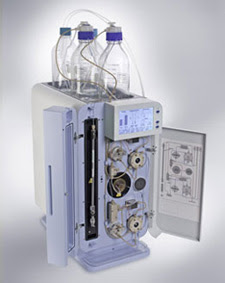By Wendy Rasmussen
In recent years, we have released several new products and applications, and with still more on the horizon, it occurred to me that now would be a great time to summarize the Pickering of today – our mindset and our wide variety of products & applications.

No longer are we simply the “Post-Column Company”. We are the “Automated-Sample Antioxidants” company. Think of us as the new “super fruit.” The Acai berry, or perhaps the new Chia Seeds (incidentally, we do have a post-column application for the identification & quantitation of Antioxidants in a variety of matrices).
We are still very active, and we as a company plan to be here for many years to come. We are still the company founded on chemistry and a desire to to teach, to spread our technical expertise, to support our customers.
It’s been a few years now since Pickering began distributing and supporting our LCTech Product line. The products have shown an ever increasing interest here in the US and in Canada (our official Sales Territory for this product line). We are very proud to offer these products and we hope we can develop it further in the future.
Historically, we have provided the back-end of an analysis (post-column derivatization). Nowadays, we can provide the front-end of analysis as well (the sample-cleanup).
In thinking about our product offerings, I realized that a simple list does not effectively show the scope of the products we have to offer in 2013 – primarily because we have a lot of overlap between products and product lines. We’re not a vertical company in that regard. I suppose one could say our product offerings are more circular in that many do not fall into a single distinct category. I am a very visual person, and for me, a Venn diagram and our overall “product scale” really helped to understand and clarify our products:


For those of who like lists, you can find one Here, on Pickering’s website, and on LCTech’s Website
For any Questions, please feel free to contact us:
Pickering Laboratories, Inc.
Mountain View, California
Email: sales@pickeringlabs.com
Phone: (direct) 650-694-6700 or (toll-free) 800-654-3330
Image of Acai Berries: http://acaiberryeducation.com/





